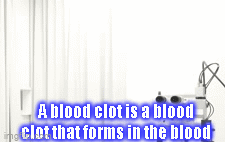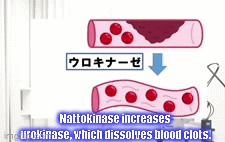In this issue, I will discuss the effects of eating natto on the eyes
Japan is home to more fermented foods than any other country in the world. Miso, soy sauce, sake, vinegar, mirin, and many others are essential to Japanese cuisine.
Fermentation not only improves the preservation of foodstuffs, but also enhances their nutritional value.
Natto, made by fermenting steamed soybeans with bacillus natto, a type of Bacillus subtilis, is one of the traditional fermented foods that Japan is proud of. These days, many people may be eating it in the hope of boosting their immune system.
Natto is a very nutritious food that contains high-quality vegetable protein, iron, calcium, potassium, dietary fiber, B-complex vitamins such as B2, B6, C, E, and K, and Nattokinase, a type of K2 enzyme.
Natto is also good for the body, and is recommended for the prevention of eye diseases, and in fact, natto is sometimes recommended for people with such diseases.
In this article, we would like to talk about the effects of natto on the eyes.
Natto prevents blood clots⁉
The reason why natto is good for the eyes is due to the enzyme "Nattokinase" contained in the sticky part of natto.
Nattokinase has the effect of dissolving blood clots and preventing blood clots. A blood clot is a blood clot that forms in blood vessels.
Abnormalities in lipids and sugar, as well as high blood pressure, can damage the inner lining of blood vessels and endothelial cells, making it easier for a blood clot to form. If a blood clot clogs the heart, it can lead to myocardial infarction, and if it clogs the brain, it can lead to cerebral infarction. Both are serious, life-threatening diseases.
In the case of the eye, blood clots are not life-threatening, but they can block blood vessels in the retina, leading to blindness in the worst case scenario.
Thus, "blood clots" are very scary for the human body.
What are some of the diseases in which blood clots form in the eye and cause vision loss?
Arteries and veins run through the center of the retina, from which blood vessels branch out and reach the entire retina.
Central retinal artery occlusion occurs when the central artery is clogged, and branch retinal artery occlusion occurs when the branching arteries are clogged.
Similarly, central retinal vein occlusion occurs when the central vein is clogged, and branch retinal vein occlusion occurs when a branching vein is clogged.
Of these, central retinal artery occlusion, in which the central artery of the retina is inhabited, is one of the most common emergency diseases in ophthalmology with a high risk of blindness.
Treatment is performed to dissolve the blood clot by massaging the eye and using medication to dissolve and drain the clogged blood clot. Time to start the treatment is considered very important because if the treatment is not carried out as soon as possible, retinal cells will become necrotic, making it impossible to see.
The treatment may include an intravenous infusion called "urokinase" to dissolve blood clots. The main component of a blood clot is a fibrous protein called fibrin.
Urokinase has the effect of breaking down fibrin. It is used to reopen blood flow by dissolving the clot.
In fact, Nattokinase contained in natto has the effect of increasing this urokinase in the body. Drugs that dissolve blood clots are expensive to treat and may not be used depending on the condition of the body.
However, natto can safely prevent blood clots at a low cost and may prevent such a risky disease of blindness.
This is the first reason why we recommend eating natto to prevent blood clots.
Suppression of bad blood vessels called neovascularization
Although still in the experimental stage in mice, Nattokinase has been reported to inhibit bad blood vessels called neovascular vessels. Central retinal vein occlusion and branch retinal vein occlusion, in which a branch of the central retinal vein is clogged, cause fundus hemorrhage, retinal swelling, rapid loss of vision, and visual field loss.
When a blood clot forms in a retinal blood vessel and interrupts blood circulation, retinal cells become necrotic. New blood vessels, called neovascular vessels, grow from the necrotic cells, and nonfunctional pathological blood vessels grow into the retina.
They are very fragile and easily ruptured, causing massive bleeding in the eye. If left untreated, it can cause an even more severe form of intractable glaucoma called neovascular glaucoma. It has been reported that Nattokinase may have the effect of suppressing these new blood vessels.
In addition, blood clots in the blood vessels of the retina can cause fundus hemorrhage, which can lead to swelling of the macula, an important part of the eye for vision. There is a treatment for this problem called vitreous injection, which is injected into the eye.
This is a groundbreaking treatment that began in Japan around 2010 and is the only treatment for these diseases. Although the treatment is covered by insurance, the cost is expensive: approximately 50,000 yen for 30% of the patients and 15,000 yen for 10% of the patients.
In addition, once injected, the drug is not the end of the treatment. The period during which the drug is effective is short, and regular administration every two to three months is necessary. Also, if the drug is used for a long period of time, it may become less effective.
Vitreous injections can halt the disease, but it is difficult to cure the disease with injections alone. Laser treatment may be necessary, and even then, the result is often visual sequelae such as distortion and darkening.
We recommend natto to avoid this kind of disease. This is also because, as before, Nattokinase is known to prevent blood clots.
Nattokinase is not only expected to prevent blood clots, but it is also reported to inhibit the formation of new blood vessels, which are bad blood vessels, although this is still in the animal experiment stage.
Therefore, we usually recommend eating natto not only for the prevention of thrombosis, but also for those who have blocked blood vessels in this way, in anticipation of its effect.
It may also be especially good for those who are already under treatment for hyperlipidemia, diabetes, or hypertension and are at high risk of thrombosis, or for those who already have venous occlusion in one eye and want to protect their good eye at all costs. The effects of these blood clots are not limited to the eyes, of course.
Cardiovascular mortality caused by blood clots is increasing dramatically worldwide.
The most common diseases caused by thrombosis are myocardial infarction and stroke. In Japan, malignancies are the leading cause of death, cardiac disease is second, and stroke is third.
Worldwide, the leading causes of death are heart disease and stroke. This has led to a growing interest in research on drugs and nutrition that effectively dissolve blood clots.
One of these foods is Nattokinase, which is found in natto (fermented soybeans).
Preventive effects other than blood clots
The effects of natto are not limited to the prevention of blood clots, of course.
Bacillus natto reaches the intestines. It is effective in regulating the intestinal environment by reducing bad bacteria.
Vitamin K2 promotes bone formation and prevents osteoporosis.
In addition, the mucin contained in the sticky part of natto is entangled in carbohydrates and prevents the rapid absorption of carbohydrates. This prevents a rise in blood glucose levels.
Lecithin contained in soybeans has the effect of reducing bad cholesterol and regulating the balance with good cholesterol.
Vitamins A, D, E, and K are fat-soluble vitamins. They are efficiently absorbed into the body when taken with fat. The absorption rate in the body is high when taken with eggs.
Natto should be eaten raw as it is heat inactivated. Thus, natto is not only rich in nutrients and good for the body, but is also recommended for preventing eye diseases of the eyes.
Cautions for Eating Natto
However, there are some cautions.
The vitamin K in natto blocks the action of warfarin, which has the effect of thinning the blood, so you should not eat natto while you are taking this medicine.
However, there is no problem if you take a Nattokinase supplement that does not contain vitamin K. Secondly, if you eat too much natto, there will be too much bacillus natto in your intestines, causing pain and vomiting. 1 pack a day is enough.
Natto also has a distinctive odor, and it is a food that can be liked or disliked by different people, but if you are not averse to it, why not try eating a pack a day?
Summary of this issue
To summarize this talk, first, natto contains vegetable protein, iron B vitamins E and K Nattokinase.
Second, Nattokinase has a thrombolytic effect and can safely thin the blood.
Third, it can be expected to prevent vascular lesions of the retina, which has a high risk of blindness, as well as suppress blood vessels of the heart disease system.
Fourth, it has been reported to improve immunity, prevent bone fractures, and inhibit bad bacteria.
Finally, fifth, please be careful if you are taking warfarin; one pack a day is sufficient.
As you can see, natto, one of Japan's most popular fermented foods, is expected to have a variety of health benefits. I also eat a pack a day.
Some people recommend taking it in the evening because blood clots often form at night, but I think it is not necessary to be so particular about the timing of eating it.
In addition to this type of diet, it is also important to develop an exercise routine to prevent blood clots from forming. Please refer to this article if you like.
In this issue, I would like to talk about the health benefits of natto for eyes.





No comments:
Post a Comment